
Why choose Tanzania?
Why compromise when you can have it all in one vacation?
There are many extraordinary places in the world, but Africa will always be something special. It is less "developed" than most places on earth and has some of the most unspoiled, spectacular and unique wilderness you can imagine. For that reason, many people feel it is like traveling to a completely different world.
Tanzania has dedicated more than 25% of their total area to protected wildlife areas, and there is a reason why they have just done this....
When people find a travel destination, they most often have to choose what kind of vacation they would like to have, because they can't have it all. Beach vacation, cultural experience, activities or exploration of nature and wildlife are often alternatives you have to choose between. Some like an active vacation and some prefer a calm and relaxing “get away”. In Tanzania you don't have to choose -you can have it all!
There are many things that in our eyes makes Tanzania the most complete travel destination in Africa. The climate is comfortable and warm throughout the whole year, as is the temperature in the Indian Ocean.
It's a safe country to travel to, without any disturbance or political unrest.
What makes it truly unique is the possibility to combine the ultimate safari with white, sandy beaches and crystal clear water. Or you could try hiking Mt. Kilimanjaro if you're up for challenging yourself, and want to undertake the worlds largest freestanding mountain. If that feels out of reach (although ascendable for most), there are several other great and scenic trekking opportunities like Mt. Meru, Ol Doinyo Lengai, Udzungwa Forest, Usambara Mountains and the Crater Highlands, to mention some. Tanzania has something to offer travellers of all ages, and offers a wide range of travel experiences, suited for all budgets – even for the most demanding travellers can be satisfied!
Africa has an abundance of destinations that is worth visiting, but Tanzania is different in a sense that it is complete in every way. If we look past the fact that the climate is warm and it offers ocean swimming temperatures all year around, the welcoming people and a highly affordable destination makes it a truly one-of-a-kind country of natural wonders.
With a fantastic coastline and exotic islands with white sandy beaches and turquoise water, it is the ideal location for all sorts of water-activities. Especially diving, snorkeling, swimming with dolphins or whale shark safari as well as deep-sea fishing and kiting.
Ever wanted to visit Lake Tanganyika, the place where Sir Henry Stanley greeted Dr. Livingstone with the immortalized line; “Dr. Livingstone I presume”? The lake is not only the deepest lake in Africa but also have the most incredible wildlife surrounding it, both below and above water level.
But the main attraction, and what Tanzania is really famous for, is the endless safari possibilities. The safari you can experience in Tanzania is probably the most varied and best safari in the whole world. It´s not without reason that it´s topped the rankings at Safaribookings.com, the largest safari nettwork online, for years!
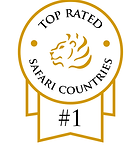
From famous locations like Serengeti and the Ngorongoro Crater to more secluded and remote places like Ruaha, Nyerere, Mahale and Katavi.
Tanzania can offer 22 national parks, not including game reserves and other natural recreational sites. Most of them are accessible by both 4x4 vehicles and airplane (for those who want the excitement of flying in a small plane “out in the middle of nowhere”). A few years back, a safari in Africa was seen as something for the few who could afford it, or for those who had saved for a small eternity. More flights and greater competition between airlines, combined with more sensible prices from locally operated companies, have now made it possible to create trips to fit all budgets!
Still being the trip of a lifetime, we experience more and more people coming back for a second or third time, simply because there is so much to see and so much to discover. Tanzania is place you will absolutely fall in love with!
We are here to show you the best of Africa, adapted to your budget and 100% customized for you.
 Amazing atmosphere |  Incredible wildlife |  Unreal scenery |  Relaxing beaches |  Thrilling experiences |  Wild roadtrips |
|---|
A brief country introduction
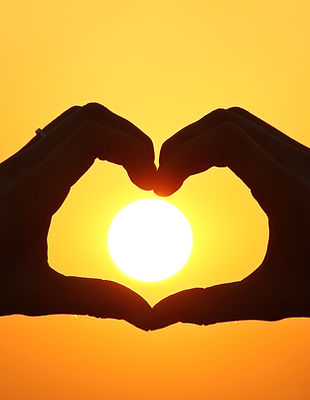
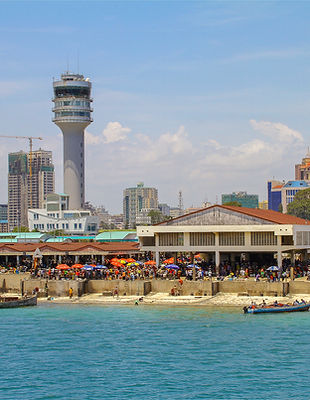
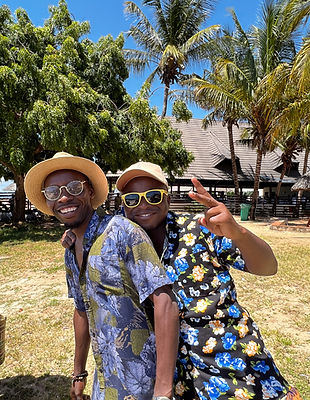
Economy
Politics
Geography
Tanzania is a land of spectacular beauty and one of the largest countries in Africa. It lies on the east coast of Africa, just south of the Equator. It borders to Kenya and Uganda in the north. To the west - Congo, Rwanda, Burundi and Zambia, and Malawi and Mozambique to the south.
It covers an area of 945,000 sq. km, the size of Denmark, France, the Netherlands, the Republic of Ireland, and the United Kingdom combined. It also incorporates several offshore islands, including Unguja (Zanzibar), Pemba and Mafia Island.
Tanzania comprises coastal lowland, volcanic highlands, the Great Rift Valley and Africa's highest peak – Mount Kilimanjaro. Tanzania is the only country in the world, which has allocated at least 25 percent of its total area to wildlife national parks and protected areas.
The total protected area is equivalent to the size of the Federal Republic of Germany and Belgium combined.
The economy is still suffering from slow growth and a shortage of foreign exchange, agriculture in particular, from poor availability of credit and equipment. However coffee, cotton, sisal, tea and diamonds are in rich supply and Zanzibar is the world's third largest producer of cloves and maize is the largest food crop. State reforms have cut inflation and the budget deficit, bringing a rise in inward investment and a return to positive growth.
Tanzania is in the bottom 10% of the world’s economies in relation to per capita income.
As of 2023, Tanzania's Gross Domestic Product (GDP) is estimated to be around $85 billion USD in nominal terms. GDP per capita is around $1300. The economy is dependent on agriculture and tourism. Between 60-70% of the countries workforce is employed in agriculture. Around 18% of GDP comes from travel and tourism. The local currency is Tanzanian shilling (TZS), however USD are also widely used.
Tanzania gained independence from Britain in 1961, then under the name of Tanganyika. In 1964 merging with Ugunja (Zanzibar) & Pemba forming Tanzania. The first democratic elections since the 1970’s were held in 1995. Former President Julius Nyerere's philosophy of Ujamaa (African Socialism) guided Tanzania's development for 21 years until he retired in 1980.
His successor, Ali Hassan Mwinyi, oversaw a relaxation of these policies and moved the country towards its first multiparty elections. Then Benjamin Mkapa, a former journalist took over as the third President of Tanzania (1999-2005). From 2005 to 2015 Jakaya Kikwete as President before John Pumbe Magufuli, who took office in November 2015, until his death in 2021. Tanzanias current president and our first female president, is Samia Suluhu Hassan.
The non-acceptance by some Zanzibaris of their union with Tanganyika is still a problem and separatism is a growing force, but eased by the fact that Hassan is from Zanzibar.
Tanzania is a presidential constitutional republic and a one party dominant state. The ruling party is CCM. (Chama Cha Mapinduzi.)
Demographics, religion, education
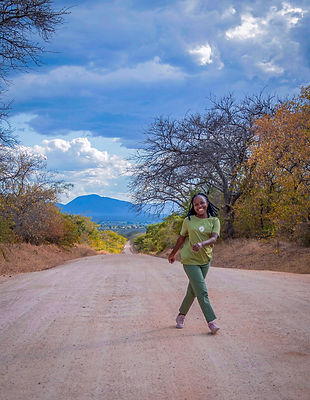
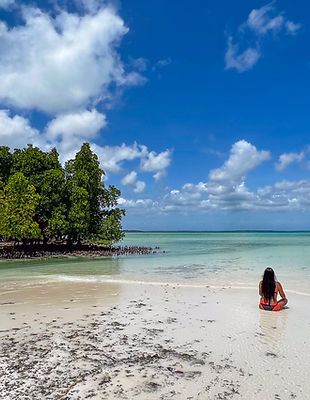
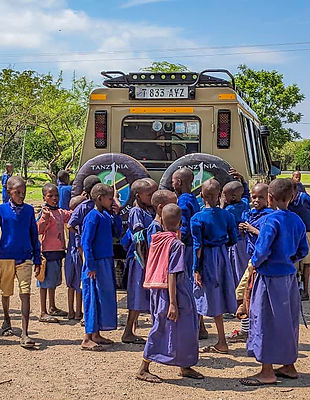
Religion
Education
Demographics
As of 2023, the estimated population of Tanzania is approximately 67 million people. Most people live on the Northern border and on the east coast. Approximately 70% of the population is rural, and Dar es Salaam is the biggest city with more than 5 million inhabitants.
There are more than 120 different ethnic groups of which Sukuma, Nyamwezi, Chagga and Haya have more than 1 million members. Both Sukuma and Nyamwezi are so called Bantu, which is used as a general label for 300-600 ethnic groups in Africa who speak Bantu languages, in which Swahili is the largest. You also have Niolotic people which includes the Luo and more famous nomadic Maasai. While Swahili and English are the official Tanzanian Languages, over 100 different languages are spoken in Tanzania, making it the most lingually diverse country in eastern Africa. Today, about 10% of Tanzanians speak Swahili as a first language, and up to 90% speak it as a second language. Thus; most Tanzanians speak both Swahili and a local language. As a visitor you will be well of with English.
More than 93% of Tanzanians say that religion is very important in their lives. Although hard to measure exactly, recent surveys have indicated that Tanzania is predominantly a Christian country (61%). Divided in 50/50 Catholic and Protestants. A large Muslim minority (35%) is divided in 41% Sunni, 15% Shia, 20% Ahmadiyya and 20% “just Muslim". The last 4% is divided between indigenous beliefs and Hinduism.
Muslims are generally concentrated in coastal areas and on Zanzibar (where close to 99 % of the population is Muslim).
In opposition to many countries in the western world, there are very few negative interactions between religious beliefs. Muslims and Christians live peacefully together and you often see churches and mosques, right next to each other. The only places where a tourist should pay attention to the way they dress, is Stone Town own Zanzibar. Woman are more comfortable covering shoulders and not wear too short skirts or shorts while roaming the city.
Education in Tanzania has undergone significant changes and improvements over the years, with the government placing a strong emphasis on making education accessible to all. Tanzania has made significant strides in improving literacy rates. As of recent data, the adult literacy rate is estimated to be around 80%, with higher rates among younger generations due to improved access to education. While access has improved, the quality of education remains a challenge. Issues include overcrowded classrooms, insufficiently trained teachers, and a lack of learning materials. High dropout rates, particularly at the secondary level, are a concern. Factors include economic hardship, early marriage, and the need for children to contribute to household income. Although gender parity has improved, girls still face barriers such as early marriage, pregnancy, and cultural expectations that prioritize boys' education.
Travel to and in Tanzania
Traveling from around the world there is only one "main road" to Tanzania, and that is by air.
Tanzania's main international airport is called Julius Nyerere International Airport in Dar es Salaam (DAR). In 2019 a new terminal (terminal 3) was opened, which serves as the main international terminal. The old main terminal (2) is not primarily used for domestic travel as well as some international flights from Air Tanzania and Precision Air. Another airport frequently used, is Kilimanjaro International Airport (JRO).
If you plan a safari in the northern part of Tanzania as well as climbing Kilimanjaro, this would normally be the best entry point. Zanzibar also have an international airport; Zanzibar Abeid Amani Karume International Airport (ZNZ) that is experiencing great growth with new routes launched almost monthly.
Why we want you to book international flights yourself
Simply because it's cheaper for you! Many travel agencies add an unreasonable surcharge to handle this for you. Today almost anyone can use the internet and easily find the best deals themselves.
If you do have questions, please get in touch and we will assist you in any way we can – free of charge, of course! To our experience most clients choose; Turkish, KLM/Kenyan Airways, Ethiopian, Qatar, Emirates or Swiss, although there are many great options (and prices) depending on your location.
Check out www.momondo.com to compare flights to Tanzania – we think it’s a great site!
Travel in Tanzania
One of the great things about Tanzania is the possibility to incorporate very different activities within one day. In the morning you can have fantastic game drive, climb the hills in the Southern Highlands during mid-day and then end the day at some idyllic beach in the afternoon. Perhaps even discover the ruins of an ancient Swahili city-state later the same night.
In most of our trips we use a combination of transportation by car and small airplanes which gives a fantastic experience from the air! Unless you have arranged otherwise, all the transportation in Tanzania is included. The only exceptions being the excursions you book yourself that are not stated in the program/itinerary. Wherever you go in Tanzania people will offer you transportation. Be sure that you only go with a driver that either knows your name or Tanzania Explorer. We recommend arranging a taxi at your hotel/lodge if you wish to go to a local market etc. Each hotel/lodge has their own regular drivers, normally they will also offer to pick you up again at a certain time, if not; request a time to be picked up.
Different methods of travel
ON SAFARI
The name and number of your safari-driver will in most cases be stated in your “Welcome to Tanzania Letter.” If you have a “fly in - fly out” safari, you will be taken to the local airport for your flight out to the park, and then picked up at the park airstrip by a driver from the camp you are staying at.
If you have chosen a “round-trip-safari”, the driver that picks you up from the hotel will be with you the whole time. There will be a cooler with bottled water available in the car. Driving out to the reserves can take anywhere from 3-8 hours depending on which route you have chosen.
Safari includes a lot of driving, also between reserves and this is a part of the whole safari experience. If you are prepared for this, you will enjoy your experience even more. Since you are going out to remote areas, a good hint would be to get other beverages of your liking and even some snacks on the way out, since they might be hard to come by in the wild.
Most safari vehicles are custom built, so they don’t have any CD player etc. If you like music, be sure to bring your own. The roads are not the best, so be prepared for a bumpy ride. The seats however are comfortable and the drivers are very experienced. If you at some point feel uncomfortable with something, be sure to communicate with your driver. He is there for your comfort and safety! At the end of the safari the driver will take you to your hotel, airport or ferry where you continue your journey. If you have any immediate questions, your driver should be able to help you.

FLYING IN TANZANIA
Most of the aircrafts used in transportation out to the parks are anywhere from 4-12 seats aircrafts. This is one of the reasons why you should pack in soft-shell/duffel bags. They don’t have a lot of space for luggage, so bags are easier to fit in. There are 3 different airlines we use, and all of them have a 15 kg (33 lb) limit for luggage.
Your question would of course be; “how strict are they?”. Before we write our recommendation it is important to say that this is not our decision and we cannot control this in any way. You are personally responsible for this, although we would ofcourse assist you if luggage is left behind and needs to be transported to your new destination. This being said, it is usually not a problem unless you are severely overweight (25 kg total). If there are many free seats on the plane this will never be a problem. With a full airplane however, it could be.
They will in most cases weigh your luggage at the airport flying in to the reserves but not out from the reserves. In general, our recommendation is to pack reasonably light. Most hotels and lodges in Dar es Salaam, Arusha and on Zanzibar can provide laundry services.
Flying out to a park in these small aircrafts is an experience in itself. You get a incredible view as the smaller aircrafts fly closer to ground than the larger ones. And yes, they are all completely safe and up to standard!

TAKING THE FERRY
Some of our travelers will use a ferry either on the way to Zanzibar or on the way back. This is a great experience and you get the opportunity to see both Dar es Salaam and Zanzibar from the seaside. First of all, all the ferries we use are high quality and safe. We always book customers in first class, which provides indoor seating in leather chairs with aircondition.
The dock in Dar es Salaam and in Stone Town on Zanzibar can be very chaotic, and queue culture is basically non-existing. So stay calm and don’t stress! There are many porters here that would like to carry your luggage but we recommend that you carry them yourself.
If you do decide to get help, make sure you agree on the price first (5000 TSh / 5 USD). If you don't agree on a price upfront, they could charge you up to 15-20 USD. Once at your destination, your luggage will be unloaded on to the dock for your pick-up unless you have carried them off yourself.
If you are on your way to Zanzibar, you could be required to fill out another visa-application card (no cost) and show your vaccine card, proving you have taken the yellow fever vaccine. If you fail to do so upon request, you would either have to take the vaccine there upon arrival or return back to the mainland. If included in your itinerary (in most cases it is) there will be a driver waiting for you outside holding a sign with your name and a Tanzania Explorer logo/mark. They will all say they are “your driver” so be sure to check you have the right driver, he should already know your destination and name and don´t have to ask for it!

TRAVELING AROUND ZANZIBAR
We highly recommend exploring Zanzibar while being there. There is lots to see and many activities to attend. Prior to your departure we can send you a list of activities and attractions to visit.
With all activities arranged by us you will have a personal driver assigned by Tanzania Explorer. If you choose to do other excursions and explore the island, this person can also assist and arrange transport for you.
For safety reasons we do NOT recommend to take a random "taxi". Your hotel can also arrange trustworthy transportation. It might be a little more expensive – but you know you can trust the driver.
In some places you can also rent scooters and motorbikes. There are many different opinions about whether this is safe or not. If you do decide to rent, you must ensure that the scooters are insured and that you can easily get in contact with the rental place if anything should happen.
The driving in Zanzibar can be pretty aggressive, with high speed even on the smallest roads, so please show utmost caution. It is also possible to take a “dala dala” which are Zanzibar’s local busses. They are very cheap, but could be time-consuming and very crowded (with anything from goods to domestic animals) onboard.
Whatever you decide to do; show common sense, and «healthy skepticism» with a smile!

Weather & Climate
All year around Tanzania enjoys a tropical climate due to its position just south of the Equator, and because of this they don't experience a real summer or winter. Tanzania can be visited all year, but some areas have limitations regarding safari during certain periods of the year. So if you have a set time for your vacation, be open to advice on areas. But all year around both safari, beach and hiking adventures like Mount Kilimanjaro can be enjoyed.
One of the great things about Tanzania is that it is warm year around, unlike other African destinations like South Africa. The yearly average temperature in the Indian Ocean is 27 degrees centigrade.
Seasons & areas
Tanzania basically has a dry (Jun-Oct) and a wet season, or "green season" as we like to call it (Nov-May), because it really varies a lot. The "long rains" are from March to May and the short rains fall between October and December. The hottest months are between October and February. Between June and October is nice if you don't like it too hot! But temperature and rain can vary a lot from area to area. The coastal areas are hot and humid with an average daily temperature of 30 degrees centigrade. The central plateau is dry and arid with hot days and cool nights.
Low laying areas in the southern and western parks are also hot, but not as humid as the coastal areas. In the northwest highlands around Arusha and Ngorongoro, the climate is temperate and cooler between June and September.
JAN & FEB
From late December and throughout February (although unpredictable) the Southern parks (Mikumi, Selous, Ruaha and Udzungwa) can experience a rain-shower every now and then, but the climate is warm and it is a great time to visit! Ruaha is by far the driest of the Southern parks.
The Western areas (Gombe, Mahale and Katavi) could have more or less a continuous wet season, but usually not extensive rains like in April and May.
The coastal areas and the northern parks have less rain during this period.

MAR-APR-MAY
By far the wettest months in Tanzania and the peak of the wet-season. Some camps in the south close down during this time, since the roads can be washed away and most local airlines halt their schedules. Especially during April and early May it could rain heavily almost every day.
This being said, the rain rarely continues throughout the whole day. If you choose to travel during this time, you would experience a lot less tourists and substantially lower prices. In March you could still enjoy a great safari in the north and beach holiday on the islands. If you choose to travel during April & May and want safari – stick to the Northern parks. It can be amazing, especially late May.

JUN-OCT
This period is the defined as the dry-season. It is the “coldest” period with the least humidity and a great time to visit all parks and the coastal areas including the islands. You should experience very little rain during this period a part from a small shower here and there, and clear sky and sunny weather most days.
It could be cooler at night and in the mornings in this period, so pack warm clothing for evenings and morning game-drives (especially in the north, Ruaha and at higher altitudes). The afternoon temperature usually varies between 20°C/68°F and 30°C/86°F.

NOV & DEC
The period is defined as the “short rains”. This is usually a period of about 4 weeks that occurs between late October and mid-December, although the exact period is of course unpredictable. In the Northern parks it could even occur earlier in October. This being said, the rains will rarely interfere with your safari since you won’t experience long periods of rain.
If you choose to travel during this time, you would experience a lot less tourists and you can get great deals many places, until Christmas holiday starts around the 22nd. Then low season turns to peak over night, and if you want a Christmas holiday in Tanzania, be VERY early if you want top picks. (9-12 months in advance).


Most famous destinations
And this is just a tiny bit of what this country has to offer
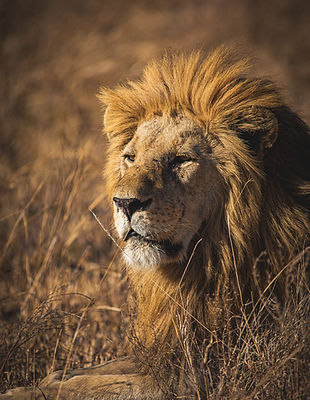

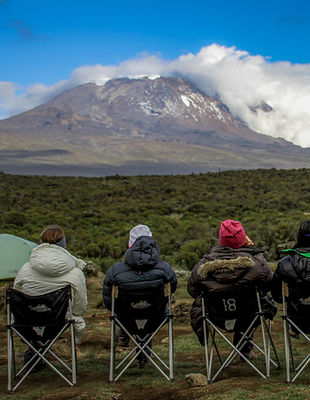
Ngorongoro Crater
Kilimanjaro
The Serengeti
The annual migration of wildebeest- and zebra herds in northern Tanzania is one of the world's most spectacular wildlife events. When six million hooves pound the open plains of Serengeti and stomps through rivers, you can witness a truly amazing sight. An image than you will carry with you for the rest of your life for sure.
The Ngorongoro Conservation Area (NCA) is a UNESCO World Heritage Site and often referred to "the eigth natural wonder of the world”. It is located in the Crater Highlands a few hours west of Arusha in the northern part of Tanzania. The Ngorongoro crater is a large volcanic caldera, that covers close to 8,300 km2 (3,200 sq.mi) of land and is the habitat for more than 25 000 large animals.
The Roof of Africa" is the tallest free-standing mountain in the world, and the highest peak on the African continent. Kilimanjaro with its three volcanic cones, Kibo, Wawenzi and Shira stands 5,895 meters (19,342 feet) above sea level at the Uhuru Peak. The mountain is ascendable for most, and a very popular attraction many have on their "bucket list".
Most secluded destinations
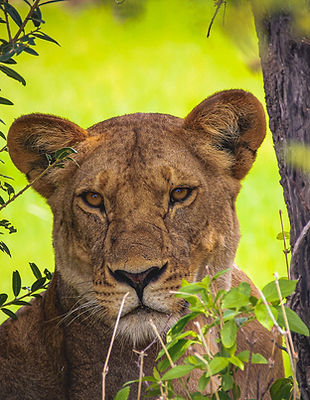

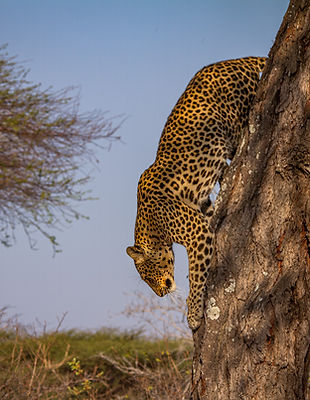
Mahale
Katavi
Ruaha
Ruaha National Park (over 20 000 km2) is the second largest national park in Tanzania and the third largest in East Africa. Experiencing less than 10% of the visitors of Serengeti, it is still little known but second to none in
wildlife diversity due to its unique location between hemispheres’. If you are after predators, this is definitely your area. Ruaha is home to more than 10% of all remaining lions in the world, and few places offer a better chance to see the elusive leopard. The park has one of the largest populations of elephants in any national park in Tanzania.
We often refer to Mahale as the last outpost of the wild world. Only accessible by boat and with no roads or infrastructure, this true and authentic wildlife area is a stunning pearl that will not disappoint you. Chimpanzee-trekking here is done in the great Mahale Mountains, starting from the shoreline of Lake Tanganyika and up into the mountains. Mahale Mountains National Park harbors the largest known population of eastern chimpanzees and due to its size and remoteness, the chimpanzees flourish.
This is one of the very few parks that really let you feel that you’re exploring and discovering a new place, before anyone else. It is so packed with wildlife that it is questioned if it surpasses the Ngorongoro Crater in animal density. This is one of the best parks to see predators hunting, and with only a few visitors per day, you are guaranteed to spend a lot of time alone in this true wilderness.
...and the spices
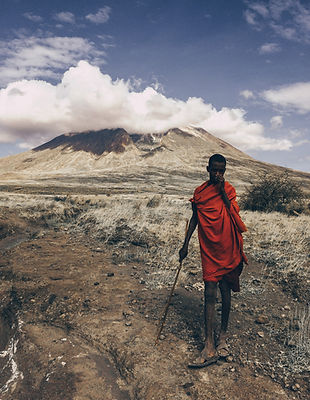
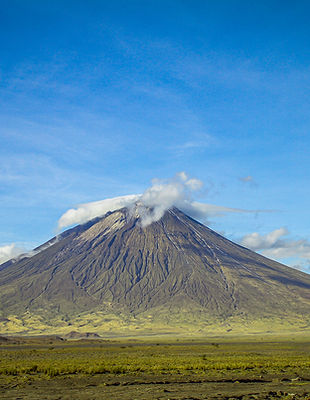
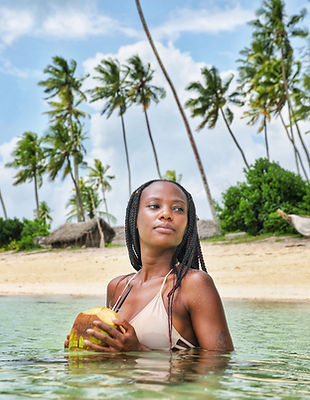
History
Beaches
Culture
Tanzania´s different tribes and over 120 ethnic groups provides a fantastic opportunity for tourists to experience a very different way of living. The most famous tribe; the Maasai, have a fascinating nomadic culture with their characteristic red blankets, distinctive hairstyles colorful jewellery and traditional jumping. In most areas you will have the opportunity to visit a local village or NGO (non-governmental organization) projects.
Olduvai gorge (cradle of mankind) is where the skull of a humanoid believed to be 1.75 million years old was discovered. It is located in the north, almost by The Ngorongoro Crater. Laetoli, dated to the Plio-Pleistocene (3,7 million years ago) is famous for its hominin footprints preserved in volcanic ash. In more modern history, Zanzibar, Mafia & Kilwa can provide some pretty intriguing history lessons from 16th century until today.
Tanzania offers an underwater paradise for marine enthusiasts visiting Zanzibar (Unguja), Pemba or Mafia Island. There are many interesting reefs to discover, featuring shallow rocky areas that suddenly drop off into vertiginous crevasses. The islands offers some of the best beaches in Africa and possibly in the world! Perfect for diving, snorkeling or just enjoying the white beaches from above the surface!
Want more details on a trip to Tanzania?
We got you covered. Not sure where to start? We got the perfect safari planning guide for you.
Worried about practicalities? Prior to the commencement of your trip, you will have a thorough preparation meeting with your Tanzania Explorer safari planner. In addition to this, you will receive extensive preparation documents, with all the information you need like: Dresscodes, packing-lists, advise about money, visa, guidelines to tipping, health requirements, vaccines and much more. You will also receive a welcome letter containing all nitty gritty about your travel, including contact information, your team on the ground in Tanzania, updated currency exchange rates, weather conditions and much more.







